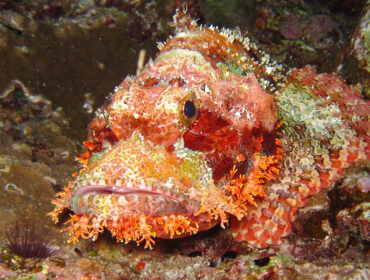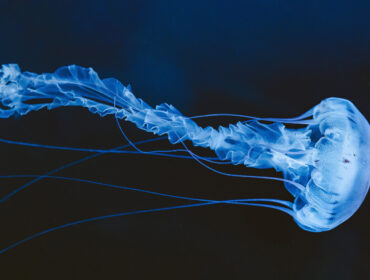Jawfish are one of the more interesting species to come across on a dive, particularly in dive sites with a lot of sand but not much coral life to observe. Found in shallow reef areas of the Atlantic, Indian, Pacific, and Gulf of Mexico, jawfish are typically small, elongated fish that prefer to reside within the sandy substrate, constantly perfecting their burrow. The jawfish builds its habitat by tunneling into the soft sand, carving out a space big enough to hide its entire body in. It secretes a substance that acts as a setting agent on the burrow, ensuring it won’t cave in. Any coral or shell pieces found outside the burrow will be used to create the entrance, and they can often be seen spitting out sand and moving pieces around to get just the right arrangement.
It feeds by popping its head out above the burrow just enough to catch plankton floating by but will retreat in an instant at the slightest feeling of threat. They are territorial of the area surrounding their burrows, but it is not unusual to see jawfish burrows only a foot away from each other. If you know a jawfish with bubbles in its mouth, stop and check it out; jawfish are paternal mouthbrooders. Once the eggs have been fertilized after courtship, the male collects them into his mouth to stay protected until they hatch into fry. The male does not feed during this entire time but will be an incubator for his offspring. Now that’s parenting!




